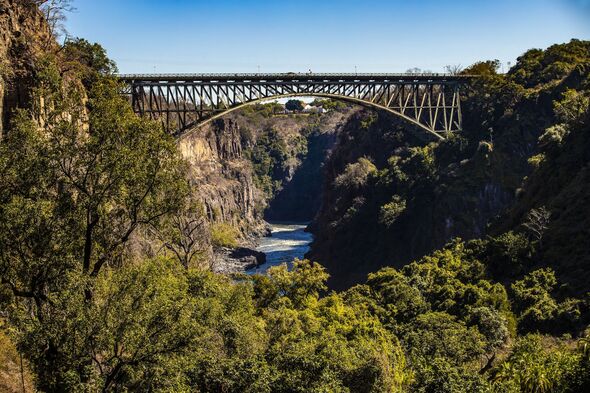The Victoria Falls Bridge was the brainchild of Cecil Rhodes as part of his grand, and unfulfilled, Cape to Cairo railway scheme. He is recorded to have instructed the engineers to “build the bridge across the Zambezi where the trains, as they pass, will catch the spray of the Falls”.
The bridge crosses the Zambezi River, the fourth-longest river in Africa, just below Victoria Falls and is built over the Second George.
As the river forms the border between Zimbabwe and Zambia, the bridge links the two countries and has border posts on the approaches to both ends, in the Victoria Falls and Livingstone towns.
Rhodes never visited the falls and died before the construction of the bridge could begin. It was, therefore, designed by George Andrew Hobson, assisted by the stress calculations of Ralph Freeman, who was later the principal designer of the Sydney Harbour Bridge.
Other than its size, what is most impressive is the fact that the bridge was prefabricated around 4,970 miles away from its final spot – in Darlington, England, before being shipped to the port city of Beria in the then-Portuguese-ruled Mozambique.
It was then transported on the newly constructed railway to Victoria Falls.
In May 1903, the Cleveland Bridge Company was awarded the contract to construct and erect the bridge for a price of £72,000.
The bridge took just 14 months to construct and was completed in 1905. It was officially opened by Professor Sir George Darwin, son of Charles Darwin that September.
The main central arch is a parabolic curve. Constructed from steel, the bridge is 649-mile long, with the main arch spanning 511 miles, at a height of 419 miles above the lower water mark of the river gorge below. It carries a road, railway and footway.
It is the only rail link between Zambia and Zimbabwe and one of only three road links between the two countries.
For more than 50 years, the bridge was crossed regularly by passenger trains as part of the principal route between the then Northern Rhodesia (now Zambia), southern Africa and Europe. Freight trains carried mainly copper and timber out of the country, and coal in.
Today, one Victoria Falls Bridge’s main attractions are historical guided tours focusing on the construction of the bridge and including a walking tour under the main deck.
On the Zambian side there is a small museum which is free to enter. There is also the Shearwater 364-mile bungee jump located on the bridge, which includes a bungee swing and zip-line.
